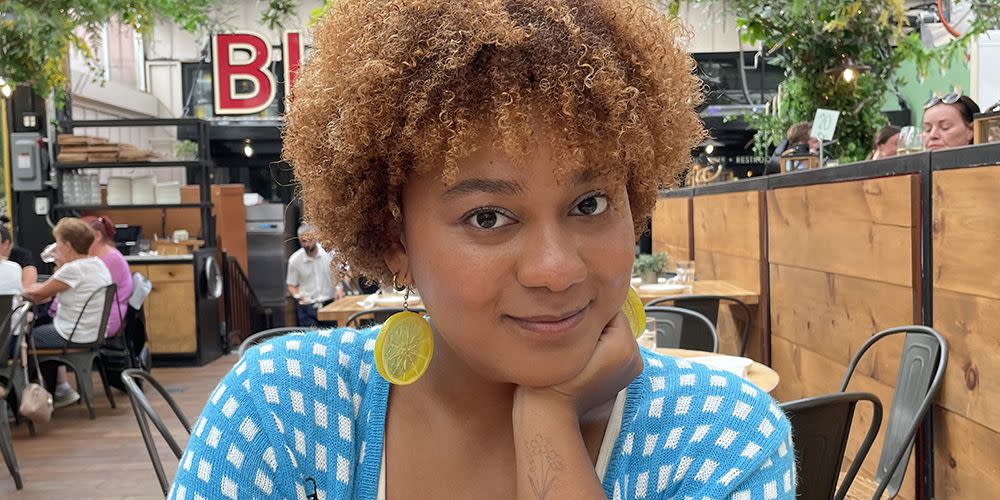'I Took Flamenco Lessons And Discovered What It Means To Be Fully Present'

Through a flamenco class, WH assistant editor Naydeline Mejia uncovered a new way to her duende, or most authentic self.
As a naturally anxious and self-proclaimed unsettled person, I was inspired to take flamenco lessons after reading one researcher’s reflections on flamenco’s psycho-somatic therapeutic capabilities that connect you to your deepest self.
The idea that moving my body in a new way could allow me to let go of an inner restlessness, even if only for a moment, was appealing. Plus, my being a fan of Rosalía—whose early music mixes pop with traditional flamenco sounds—made embarking on this journey a no-brainer.
I had no idea what to expect before my first class as I’d never even seen a flamenco performance before, let alone tried it myself.
Nerves lingered as I entered the flamenco studio in NYC—to be honest, I was intimidated—but I knew I was in for something transformative.
Soon after I chose a spot near the back of the room, the instructor, a renowned Spanish flamenco dancer, began teaching us palmas, the hand-clapping motion synonymous with the art of flamenco.
The goal of palmas is to match the rhythm of the music to accentuate both the song and the dance. It is so essential to flamenco, in fact, that it’s considered a musical instrument and may even substitute for the song itself.
Then it was time for plantas and tacóns. Plantas describes hitting the floor with the ball of your foot, while tacóns (“heel” in Spanish) describes stomping the heel. Left leg back, hit the floor, heel; repeat on the right.
In flamenco, your body is an instrument—arguably, the most important.
If you’re out of rhythm, the entire performance is compromised. This could have deterred me, but I found myself in a sort of trance, fully aware of my every movement.
Perhaps it’s the awakening of my duende that now pushes me almost to tears when my heel grazes the ground. After taking just two classes so far, I can say that dancing is one of few activities where I can be fully present, and flamenco is the only dance form that allows me to release shame and self-consciousness.
The art form draws strong emotions from me—it’s a slightly spiritual feeling that’s hard to describe unless you’ve experienced it yourself. It’s powerful to let myself just feel—joy, anger, or frustration—and to allow those emotions to drive my movements rather than suppressing them.
That’s the magic of flamenco, and it’s a feeling I hope to keep chasing.
This article is a part of a new Women's Health series called Firsts Class, which celebrates the beauty of being a beginner. It first appeared in the January/February 2023 print issue of the magazine.
You Might Also Like
